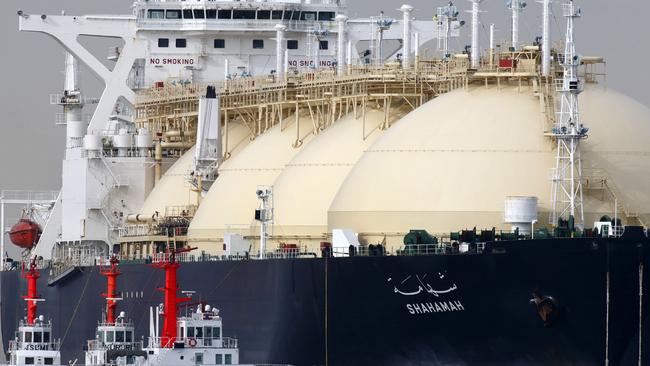New east coast gas supplies ‘too late and just as expensive as LNG imports’
The findings of a Rystad Energy report will be seized on by proponents of LNG imports amid a debate on how to remedy a looming east coast shortage.

Business
Don't miss out on the headlines from Business. Followed categories will be added to My News.
New sources of gas that have been earmarked to fix a looming east coast shortfall will not be ready in time and cost just as much as imported LNG, a report from Rystad Energy on behalf of gas pipeline operator Jemena has concluded.
The Australian Energy Market Operator has warned the country’s east coast will experience a material shortfall of gas by 2029, prompting calls for urgent action.
But there are two contrasting visions. For some, Australia should prioritise the development of new sources of supply in Queensland and the Northern Territory, though others have insisted the nation is better served by concentrating on building LNG import terminals, which would allow NSW and Victoria to import cargoes.
The contrast risks stoking uncertainty in the minds of would-be buyers. Large customers of gas have been reluctant to commit to imported gas as proponents of unlocking new gas warn it will be far more expensive.
In a report that proponents for LNG imports will seize on, Rystad said that, while there were ample sources of new gas available, developing them and the supporting infrastructure would take billions of dollars and years of work, making the new wells unviable as an immediate panacea.
Rystad said that, as a result, gas sourced through LNG or traditional pipelines would be similarly priced at between $14 and $19 a gigajoule. Such levels would be higher than the current price of $12-$20 a gigajoule.
Jemena managing director David Gillespie said if prices were similar, timing must be decisive.
“With both options (regasification terminals and new onshore pipelines) being price comparative, it’s time for the debate around new gas supply to move on from cost and to start considering time,” Mr Gillespie said.
“Rystad’s report makes clear that regasification terminals are the only solution currently available which will bring new gas to the east coast gas market before shortages materialise in the second half of this decade.”
The support of Mr Gillespie to LNG imports is not unexpected. Jemena has recently completed works on an upgrade to its pipeline infrastructure to support the Port Kembla LNG import terminal, owned by Andrew Forrest’s Squadron Energy.
Opponents such as APA Group have moved to promise new investment in pipelines that it said could negate the need for LNG imports.
However, Mr Gillespie said the choice was not binary and he believed the east coast would need to rely on both piped and LNG imports to stave off shortfalls. However, the report’s price findings are contrary to those of the ACCC, which concluded the imported LNG would probably cause higher prices than piped alternatives, an assessment that has been seized on by critics of importing LNG.
Still, there is near universal acceptance that Australia is moving too slowly in developing new sources of supply.
The gas industry has urged the federal government to expedite new developments, but projects remain stalled, which critics say indicates the support of Anthony Albanese towards the fuel source.
Labor rejects those allegations, insisting it cannot cut environmental corners, and that its commitment to gas is reflected by its strategy unveiled last year that concludes Australia will need the fossil fuel until 2050 at least.
The threat of an east coast shortfall is of pressing concern to the manufacturing industry, which is reliant on the fuel source as it is unable to easily switch to renewables.
It has warned that many are already struggling to remain financially viable and would not be able to endure further price increases.
More Coverage
Originally published as New east coast gas supplies ‘too late and just as expensive as LNG imports’





